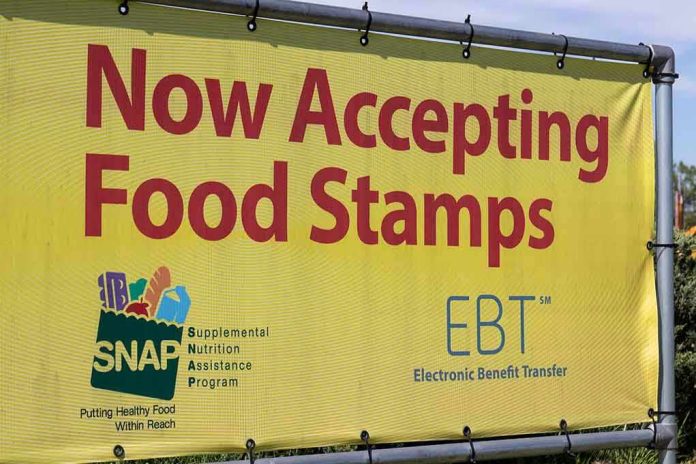
Forty-one million Americans are staring down the threat of empty plates next month, all because a gridlocked Congress can’t keep the lights on.
Story Snapshot
- SNAP benefits for 41 million Americans may vanish in November 2025 if the shutdown drags on.
- Children, seniors, and low-income families are at the epicenter of this looming crisis.
- States and food banks brace for a tidal wave of need with no federal backup in sight.
- This standoff exposes the fragility of America’s social safety net and the outsized consequences of political inertia.
Political Gridlock Threatens Basic Survival
As midnight struck on September 30, 2025, Congress failed to pass a federal budget or even a temporary extension, plunging the country into another government shutdown. The immediate casualty: the Supplemental Nutrition Assistance Program, or SNAP, the modern successor to food stamps. While October’s benefits were safe—funds had already been set aside—the real danger sits just days ahead. Unless lawmakers find a way through the fiscal deadlock, November’s payments will not arrive for the program’s 41 million recipients. This is not a slow-burn threat. It’s a cliff.
SNAP’s reach is vast. It touches one in every eight Americans, including over 13 million children and 5 million seniors. For countless families, these benefits are the only thing keeping food on the table. In places like Texas, where 3.5 million residents rely on SNAP, state officials are openly warning of catastrophe. Congressional gridlock isn’t an abstraction here—it’s a very real, very personal risk of hunger for people who did nothing to cause this mess.
Shutdown Mechanics: Why SNAP Is at Risk
The reason is painfully simple: federal law prohibits agencies from spending money not approved by Congress. SNAP, like many safety net programs, depends on annual appropriations. When the money stops, so do the benefits. History offers little comfort. During previous shutdowns, temporary workarounds and contingency funds barely stretched a few weeks. Food banks and community organizations have long memories—they remember the chaos, the long lines, the desperate calls for help.
States are scrambling to prepare, but their hands are tied. They administer the program and distribute benefits, but the funding comes from Washington. Without it, EBT cards go empty. The USDA, which oversees SNAP nationally, has offered no contingency plan for November 2025. Advocacy groups like FRAC are sounding alarms, but even the loudest warnings can’t conjure money Congress hasn’t authorized. The result is a dangerous game of chicken with the lives of millions at stake.
Impact: A Domino Effect on Families, Communities, and Local Economies
Food insecurity doesn’t just mean hunger—it means anxiety, health problems, and a daily struggle that ripples far beyond the dinner table. For children, missed meals mean trouble in school and setbacks that can last a lifetime. For seniors, it increases the risk of hospitalization and chronic disease. The specter of 41 million people suddenly unable to afford groceries is not just a humanitarian disaster; it’s an economic one. Local grocers and farmers lose a massive base of customers. Food banks, already stretched thin, brace for a surge they are not equipped to handle, both in supplies and volunteers.
Advocates argue that SNAP is among the most effective anti-poverty tools the country has ever created. Its abrupt halt would not only harm the most vulnerable but also damage entire communities. The political gridlock in Washington, often dismissed as “business as usual,” carries consequences that are neither abstract nor distant. The pain is real, immediate, and deeply personal for millions.
Expert Warnings and the Search for Solutions
Policy experts, food security advocates, and state officials converge on one point: this crisis is entirely avoidable. FRAC and similar groups urge Congress to adopt emergency measures to shield food benefits from shutdowns. State agencies plead for clarity and resources. Food banks warn that their capacity to “fill the gap” is limited and short-lived. Some policy voices push for structural reforms—longer-term solutions to prevent essential benefits from becoming bargaining chips in political standoffs. Others call for public mobilization to pressure Congress into action before the November cliff arrives.
Yet, as of the last week of October, hope is thin. The shutdown continues, and the clock ticks down. Recipients, states, and support organizations alike are left waiting, watching, and wondering whether basic food security will fall victim to another round of political brinkmanship.
Sources:
FRAC: How Will a Government Shutdown Affect SNAP Benefits?
Express News: Texas SNAP Federal Shutdown



